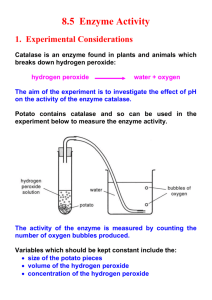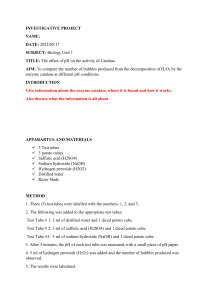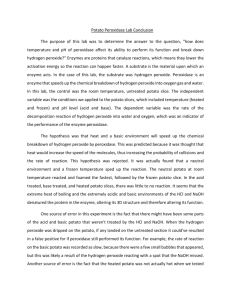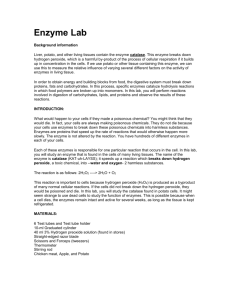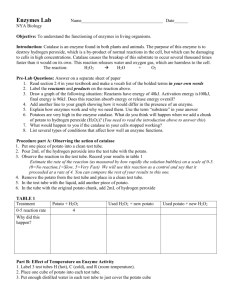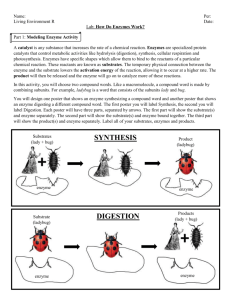Potato Enzyme Lab: Catalase Activity & Reaction Rate
advertisement
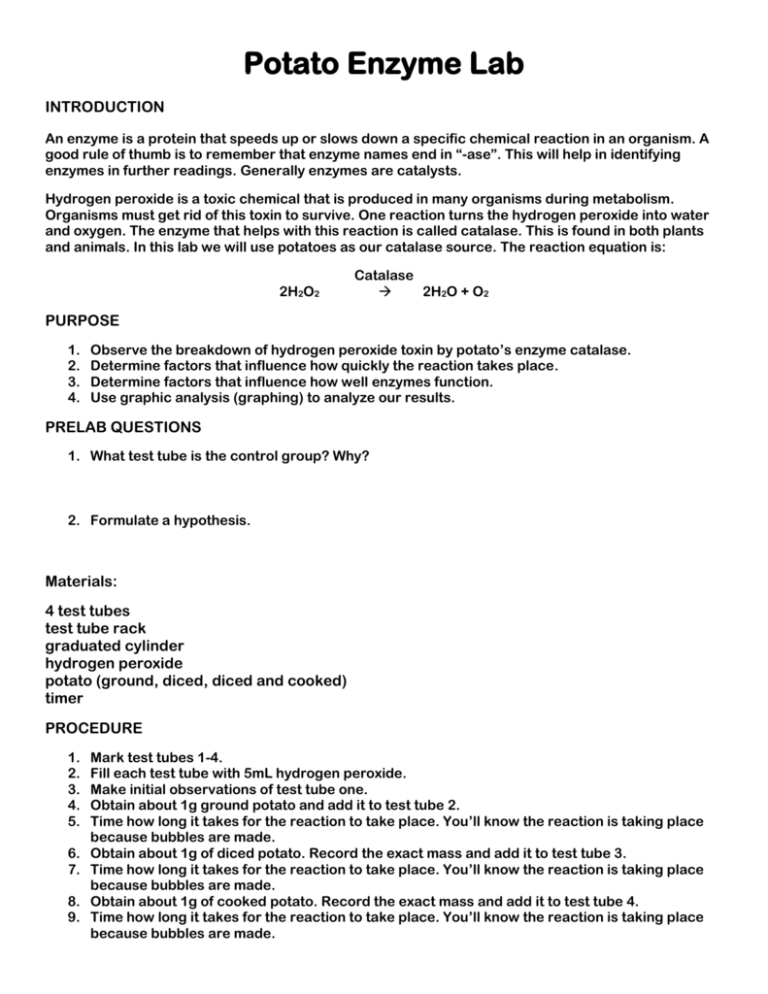
Potato Enzyme Lab INTRODUCTION An enzyme is a protein that speeds up or slows down a specific chemical reaction in an organism. A good rule of thumb is to remember that enzyme names end in “-ase”. This will help in identifying enzymes in further readings. Generally enzymes are catalysts. Hydrogen peroxide is a toxic chemical that is produced in many organisms during metabolism. Organisms must get rid of this toxin to survive. One reaction turns the hydrogen peroxide into water and oxygen. The enzyme that helps with this reaction is called catalase. This is found in both plants and animals. In this lab we will use potatoes as our catalase source. The reaction equation is: 2H2O2 Catalase 2H2O + O2 PURPOSE 1. 2. 3. 4. Observe the breakdown of hydrogen peroxide toxin by potato’s enzyme catalase. Determine factors that influence how quickly the reaction takes place. Determine factors that influence how well enzymes function. Use graphic analysis (graphing) to analyze our results. PRELAB QUESTIONS 1. What test tube is the control group? Why? 2. Formulate a hypothesis. Materials: 4 test tubes test tube rack graduated cylinder hydrogen peroxide potato (ground, diced, diced and cooked) timer PROCEDURE 1. 2. 3. 4. 5. 6. 7. 8. 9. Mark test tubes 1-4. Fill each test tube with 5mL hydrogen peroxide. Make initial observations of test tube one. Obtain about 1g ground potato and add it to test tube 2. Time how long it takes for the reaction to take place. You’ll know the reaction is taking place because bubbles are made. Obtain about 1g of diced potato. Record the exact mass and add it to test tube 3. Time how long it takes for the reaction to take place. You’ll know the reaction is taking place because bubbles are made. Obtain about 1g of cooked potato. Record the exact mass and add it to test tube 4. Time how long it takes for the reaction to take place. You’ll know the reaction is taking place because bubbles are made. DATA AND OBSERVATIONS Test tube 1. Observations Time for reaction (s) Nothing 2. Ground Potato 3. Diced Potato 4. Cooked Potato DATA ANALYSIS 1. Calculate a rate of reaction per gram of potato for each trial. Rate = time/grams 2. Graph the data. Include a title, labels, units, and a key. Type of graph: bar/column graph Analysis Questions 1. What did the catalase do? How do you know? 2. What did grinding the potato up do to the rate? Why did this change the rate? 3. What did cooking the potato do to the rate? What conclusion can you draw about that result?
